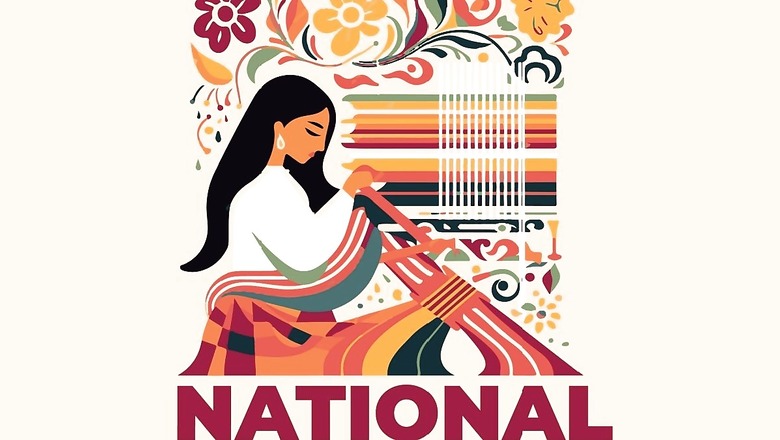
views
Khadi, a fabric of immense national significance, has evolved from a symbol of independence to a celebrated choice in contemporary fashion. As it garners increasing attention, Khadi is finding its place in the hearts of modern designers and consumers alike.
The Significance of Khadi
Prakhar Rao, founder, Zero Tolerance, underscores Khadi’s unique value: “Khadi is a fabric of great national importance and the West is finding it difficult to replicate.” He highlights that Khadi is not only beneficial for the skin but also for the environment. Unlike mass-produced textiles, Khadi has negligible carbon emissions and plays a crucial role in preserving South-Asian cultural heritage and traditional fabric-making techniques.
At Zero Tolerance, 95 percent of their pieces are handmade, reflecting their commitment to the craftsmanship of generational artisans. Rao emphasizes, “As we dive deeper into the idea of South-Asian representation, we want to do things that make a difference on the ground level.” Collaborating with an NGO in their city, they support underrepresented communities, including weavers from the outskirts of Lucknow. These artisans, though faced with competition from cheaper, machine-made fabrics, produce high-quality Khadi, which remains unmatched for its craftsmanship and eco-friendliness.
Khadi’s Modern Transformation
Designer Shilpi Gupta offers a perspective on how Khadi has evolved in the fashion world: “Derived from Khaddar, Khadi, a hand-spun and hand-woven fabric, reflects both the past and the future.” Gupta points out that Khadi’s raw texture symbolizes simplicity and the power of grassroots movements. Today, Khadi has transcended its traditional roots to become a versatile fabric used in various modern styles and designs.
Khadi has gained popularity among Gen Z and homegrown clothing brands for its adaptability. Gupta notes, “With a versatility in modern cuts and prints, Khadi is not just a designer choice but a runway supreme.” The fabric has made its way into trendy tops, dresses, shirts, and jackets, appealing to urban consumers. It offers a fashion statement that combines eco-friendliness with comfort for all seasons.
From boho-chic ensembles to high-fashion couture, Khadi’s evolution has been remarkable. Gupta observes, “Today, from national to international stages, its timeless appeal and adaptability capture the attention of wearers.” This transformation underscores Khadi’s journey from a symbol of independence to a global fashion staple.
The Future of Khadi
As Khadi continues to evolve, it remains a testament to the rich tradition of handcrafting while adapting to modern fashion sensibilities. With contributions from dedicated artisans like those supported by Zero Tolerance and innovative designers like Shilpi Gupta, Khadi’s legacy endures and thrives. Embracing Khadi not only celebrates a cherished tradition but also supports sustainable and ethical fashion practices.
This Handloom Day, as we reflect on the journey of Khadi, we recognize its significant impact on fashion and culture. Khadi’s enduring charm and adaptability ensure its place in both the past and the future, making it a fabric that continues to inspire and captivate.



















Comments
0 comment